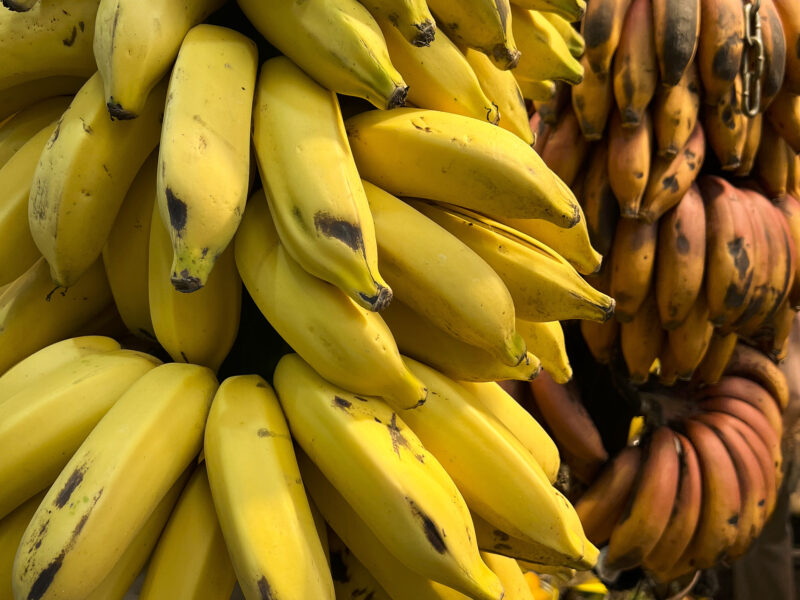The Canarian dwarf banana, an exceptional fruit
Bananas are the most consumed fruit in the world. Not only are they delicious, but bananas are high in fiber and packed with vitamins and minerals. In the Canary Islands, the dwarf banana is the main export to mainland Europe. But what makes the Canarian banana so special? We visited the banana plantation Hacienda La ReKompensa in Gran Canaria. There we learned all about bananas and why the Canarian dwarf banana is an exceptional fruit.
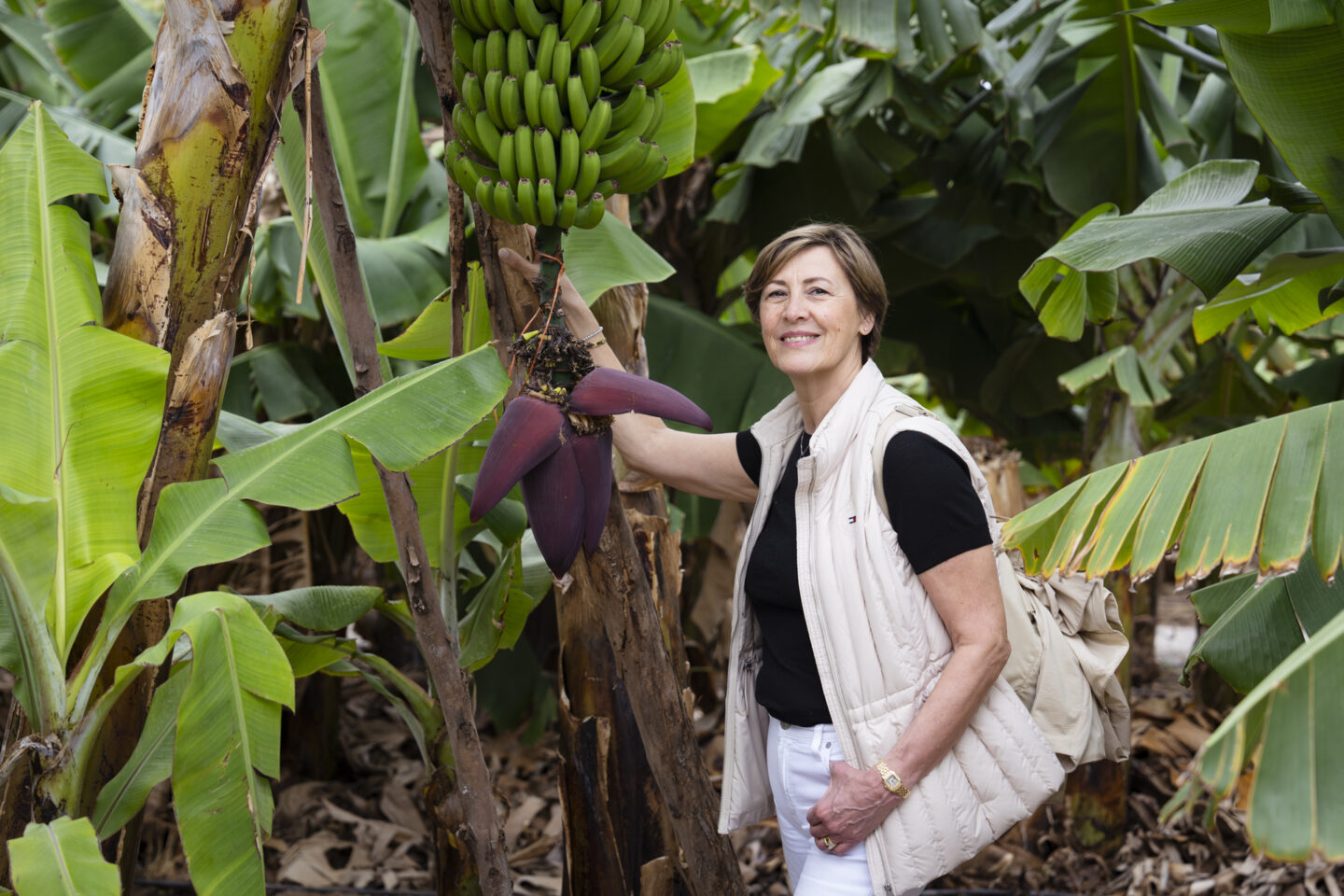
Where does the banana come from?
Banana plants grow in tropical and subtropical regions but must be domesticated to be productive. The process was successfully developed 8 to 10 thousand years ago in Papua New Guinea. Over thousands of years, the knowledge spread to surrounding countries such as Malaysia, the Philippines, Australia and India. Alexander the Great was a banana lover and brought the fruit to Europe and Africa. The conquistadors came full circle and brought the plant to Central and Latin America.
A wide range of varieties
Of the 2,000 varieties of bananas, only about 400 are suitable for commercial cultivation. The bananas we know best are the Cavendish bananas.
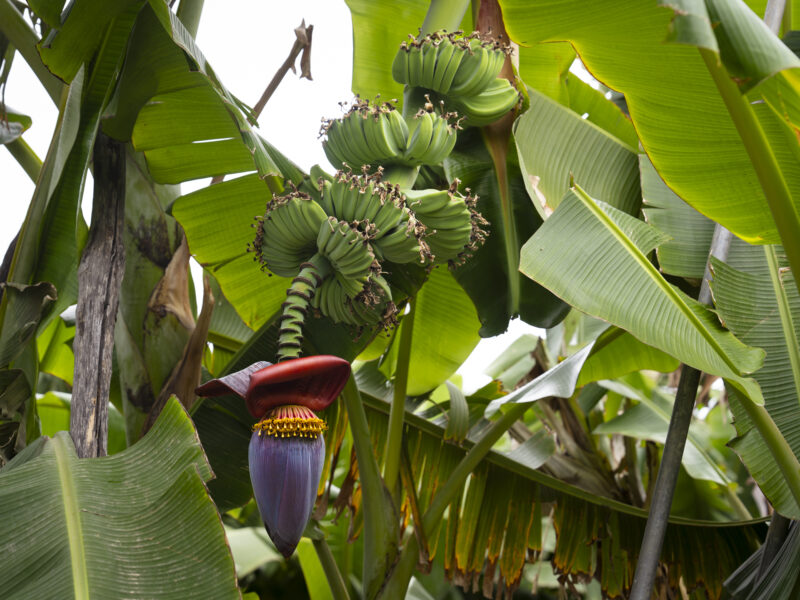
The role of Duke Cavendish
In the 19th century, Duke Cavendish received banana plants from Mauritius, which he grew in his greenhouses in the south of England. The variety was named after him by his botanist, and the Duke took the plants to the Canary Islands for their favorable climate and fertile soil. Production of Cavendish bananas was limited until the Panama fungal disease of the 1950s destroyed large plantations of the Gros Michel variety in Central and South America. They were replaced by the Cavendish because of its high productivity and resistance to the disease.
Most popular Cavendish varieties
Most bananas in the supermarket are of the Cavendish variety. For example, the well-known Chiquita banana is the Grande Naine subvariety of the Cavendish. The Canary banana is the Dwarf Cavendish or dwarf banana.
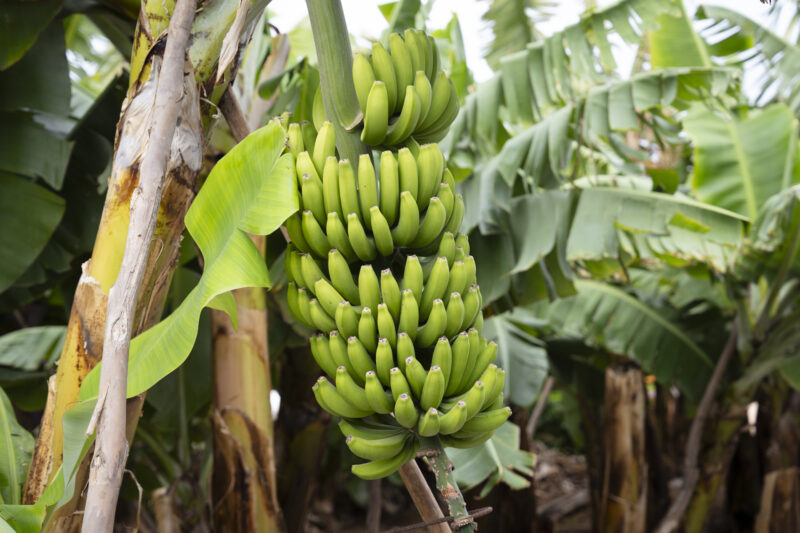
Other varieties
Apple banana
Cuba's small apple banana is one of the tastiest bananas on the market. The fruit tastes slightly sour, like a green apple.
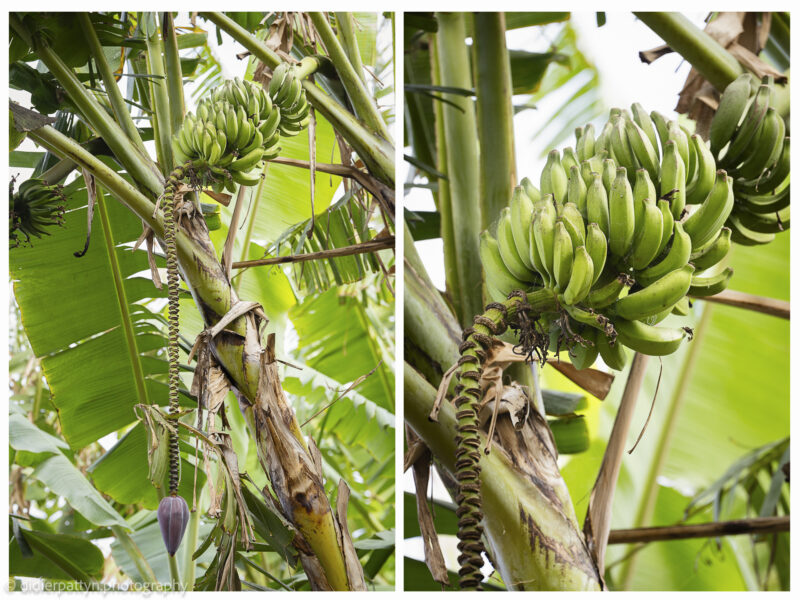
Red banana
The red banana is a gourmet banana. The fruit comes from Ecuador and has a raspberry flavor. The flavor develops as the banana ripens and the fruit is at its best when the red color turns orange.
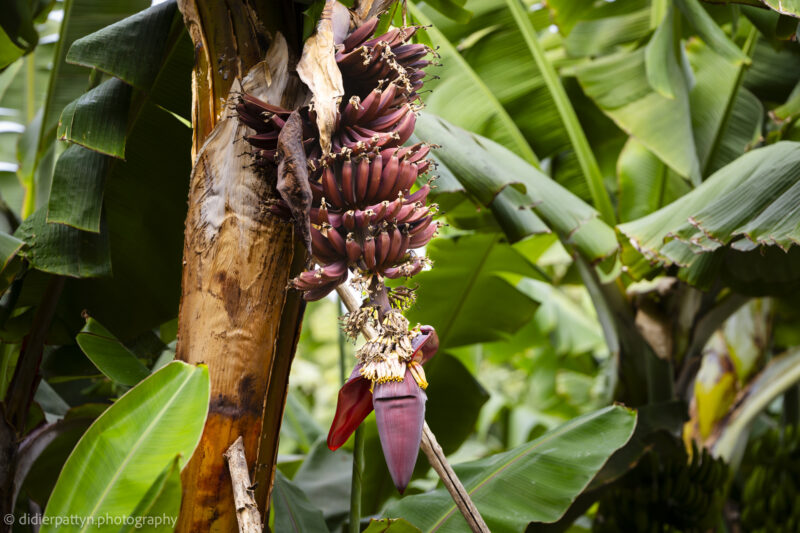
Blue banana
The blue banana comes from Asia and is not available in Europe. The fruit tastes like vanilla.
Popocho banana
The popocho is a rare plantain native to Colombia and Venezuela. Eaten raw, the banana has no flavor, which is why it was once used as animal feed. The banana develops a flavor when fried. Plantains can be eaten as a snack, for breakfast, or as a substitute for potatoes. However, plantains should be green before cooking.
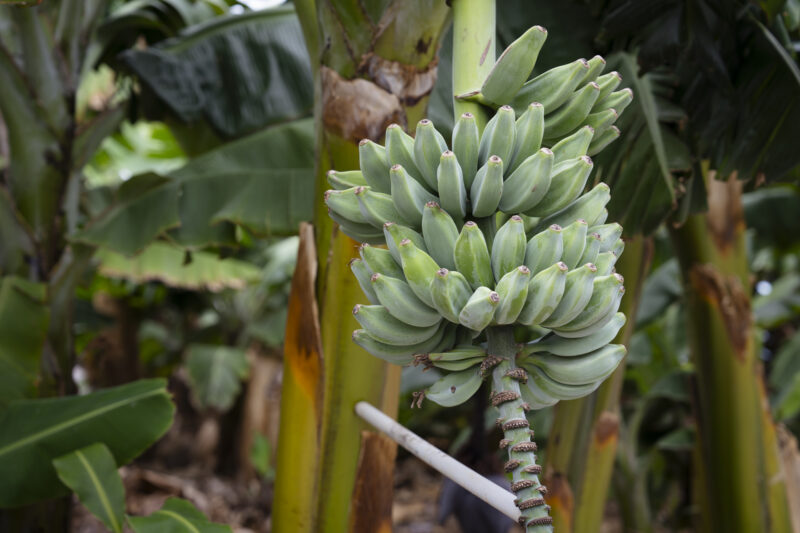
The banana: tree or plant?
Bananas grow on a plant, not a tree. The banana plant has a very short life span and is made of fiber, not wood. The plant is also hermaphrodite, which means it is self-pollinating.
At Hacienda La ReKompensa, the plants are considered female families. Shoots grow next to the mother plant, and when the mother plant dies, the shoots take over and multiply. The banana plant matures after 9 months and then develops a flower or placenta. A banana plant produces only one flower in its entire life. After harvesting, the stem is cut off to make room for the growth of daughters. Up to 15 daughters can grow from 1 mother. Plants reproduce through their roots, not seeds.
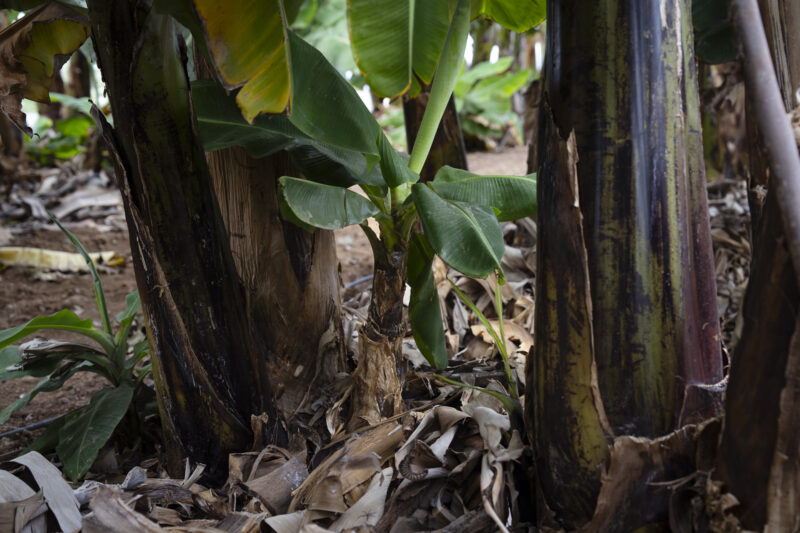
The fibers and leaves of the mother plant are left on the ground as compost and to retain moisture in the soil. In the Middle Ages, banana plants were grown in Japan for their fibers. They were used to make cloth, shoes, and jewelry.
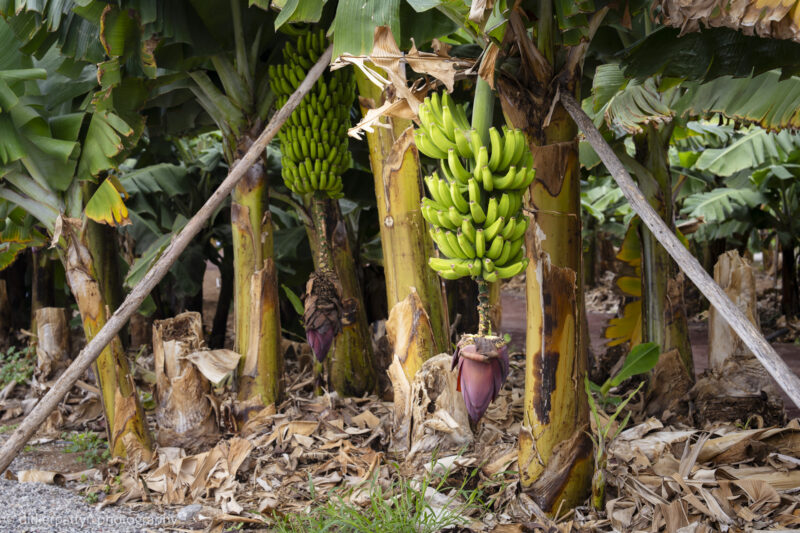
How a banana bunch grows
Small knobs grow under each leaf of the flower or placenta with a small flower at each end. The knobs grow into clusters of bananas. A cluster grows under each leaf. As the bananas grow, the leaves dry up and fall off. It takes no more than 1 month for the plant to have a full trunk of bananas. After another 2 to 3 months, the fruit is fully grown and the banana trunk can be harvested. Bananas are always picked when they are green. The ideal time is 1 week before the fruit turns yellow.
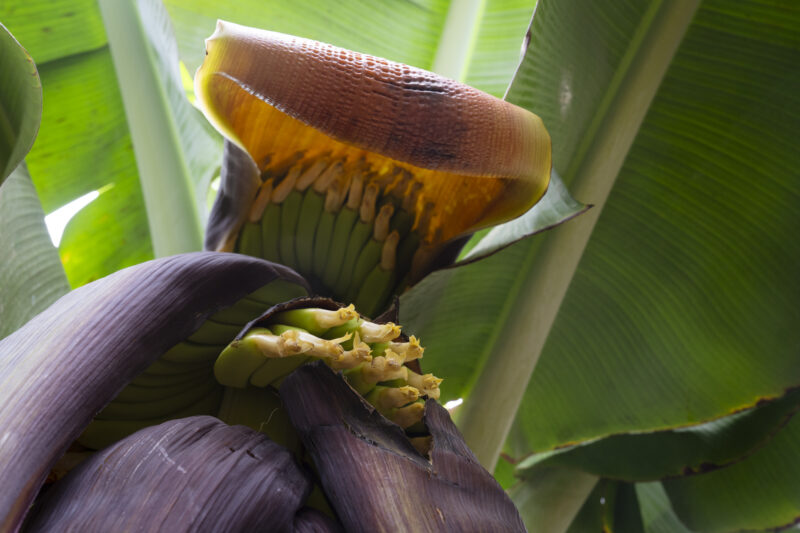
Why are bananas bent?
As long as the baby bananas are protected by the petals of the placenta, they grow toward the ground. When the leaves fall off, the flowers at the top of the fruits are freed. They seek the sun, causing the bananas to bend upward. The top bananas on the stalk are the oldest and bend upward first. They are also larger because they get more moisture down the stem.
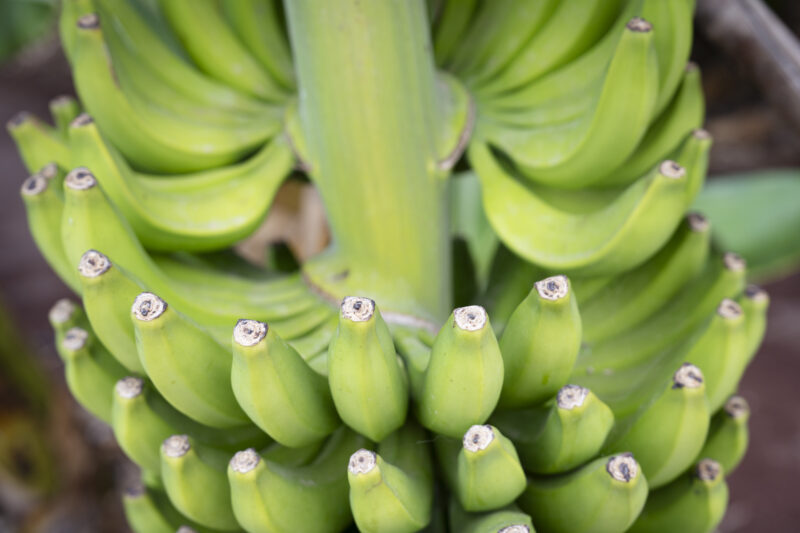
How many bananas are on a single plant?
The Cavendish variety is very productive, with each plant producing 200 to 300 bananas. A full bunch averages 50 kilos but can weigh as much as 70 kilos. The banana plant is supported to prevent it from collapsing under the enormous weight of the fruit. Traditionally, this is done with 2 to 4 strategically placed poles or horcons. On modern plantations, the banana plants are held up with metal cables.
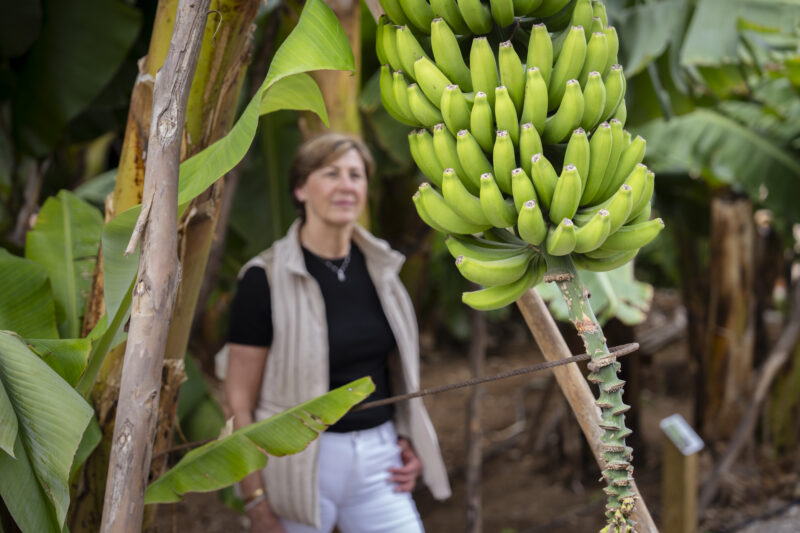
The unique taste of the Canary Islands’ dwarf banana
The Canary Islands dwarf banana is a unique fruit and the only European banana with IGP status. The label guarantees the origin and quality of the product.
The subtropical climate, volcanic soil and abundant sunshine provide an ideal habitat for the Canarian dwarf banana. The fresh sea breezes slow down the ripening process, allowing the fruit to stay on the plant longer and convert more starch into sugar. The result is a banana with an intensely sweet taste.
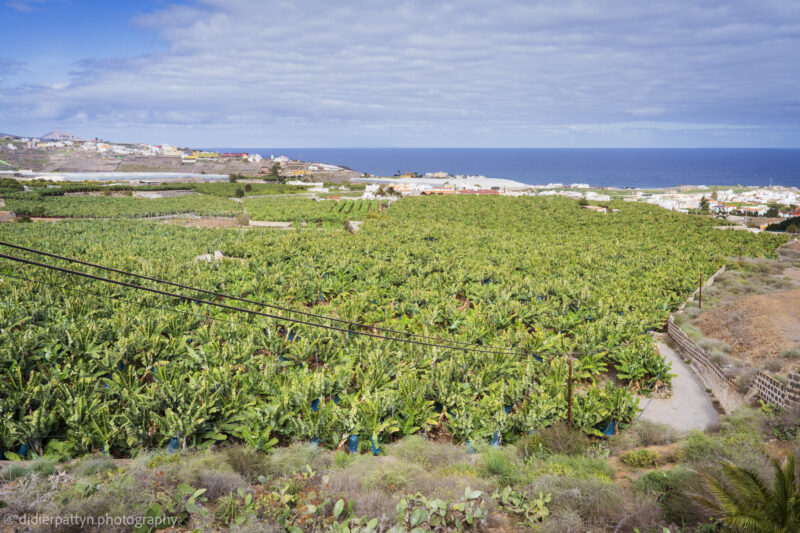
The Canary Islands banana is intended for local consumption and for export to mainland Europe. Transportation from the plantation to the market takes no more than 1 week. For this reason, Canarian bananas are harvested later than South American bananas. Bananas lose their aroma very quickly after being picked. The shorter the time between harvest and consumption, the sweeter the banana tastes. So, the Canarian dwarf banana not only has a smaller carbon footprint. It is also much tastier because of the short transport distance.
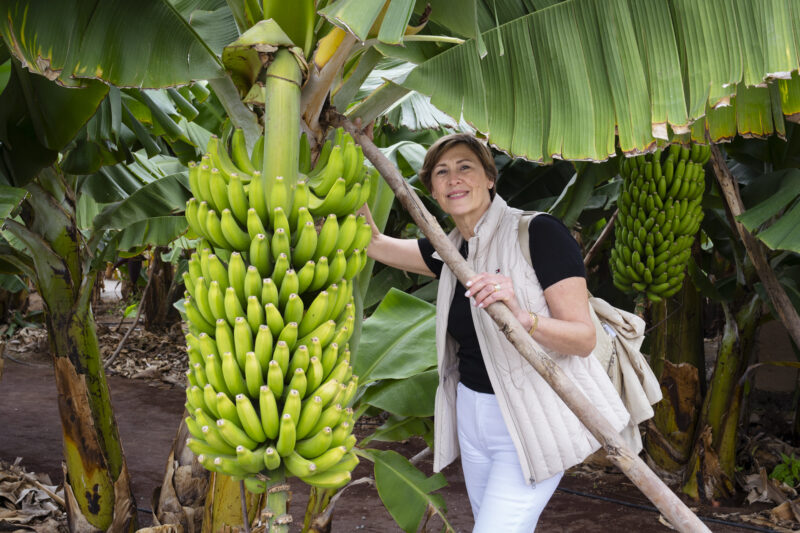
How do you recognize the Canarian dwarf banana?
The Canarian dwarf banana is slightly smaller than the standard Cavendish. The skin has a deep yellow color with distinctive dark spots. These are sugar spots that emphasize the flavor and nutritional value of the fruit. The bananas contain less starch and are also juicier.
